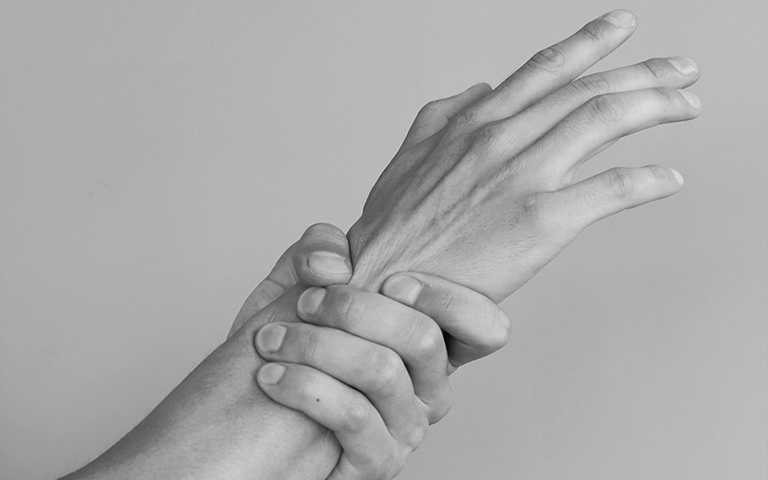Carpal tunnel syndrome occurs when there is pressure on the Median nerve in the carpal tunnel of the wrist. It is characterised by a painful tingling and burning sensation particularly around the fingers. People with carpal tunnel syndrome experience symptoms such as numbness, tingling and pain especially at night.
What causes carpal tunnel syndrome?
Any swelling can cause pressure in the carpal tunnel, however most cases are due to an unknown cause. Often there is a combination of factors, some of which include:
- Pregnancy – pregnancy hormones can cause increased water retention, which can cause swelling in the wrist. Usually symptoms dissipate soon after birth.
- Arthritis and other inflammatory diseases – these diseases can cause inflammation and swelling in the wrist
- Wrist injuries – bone fragments from fractures can irritation and inflammation of the wrist.
- Genetic/Congenital factors – some individuals are born with increased susceptibility
- Tumours – some tumours (usually benign) can protrude into the wrist and increase pressure in the wrist
- Repetitive use – overuse can cause carpal tunnel tendons to become irritated and inflamed
Risk factors
Some individuals are at a greater risk of developing carpal tunnel syndrome. These include:
- Pregnant women
- People with certain types of arthritis
- People who have undergone sudden weight gain
- People who perform repetitive tasks with their hands on a regular basis
Symptoms
Symptoms include numbness, a “pins and needles” sensation in the fingers and darting pain originating in the wrist (particularly at night). There is less pain in the little finger and half of the ring finger. Affected people also experience weakness of the hand.
Treatment
There are multiple types of treatments, which can be broadly categorised as surgical and non-surgical treatments. The recommended treatment may depend on whether the carpal tunnel syndrome is associated with other conditions.
Non-surgical treatments

- Resting and avoiding using the affected hand in worsening activities
- Wearing splints and wrist braces
- Physiotherapy
- Diuretic medications to reduce build-up of fluids around the wrist
- Injection of corticosteroids and local anesthetic to reduce pain and swelling
Surgical treatment
This involves a surgical procedure whereby the sheath of the carpal tunnel is incised to reduce pressure on the median nerve. Injury caused at work?
Where to get help
- Please book a consultation with one of our experienced doctors at Southgate Medical for further advice regarding diagnosis & treatment of this condition.

